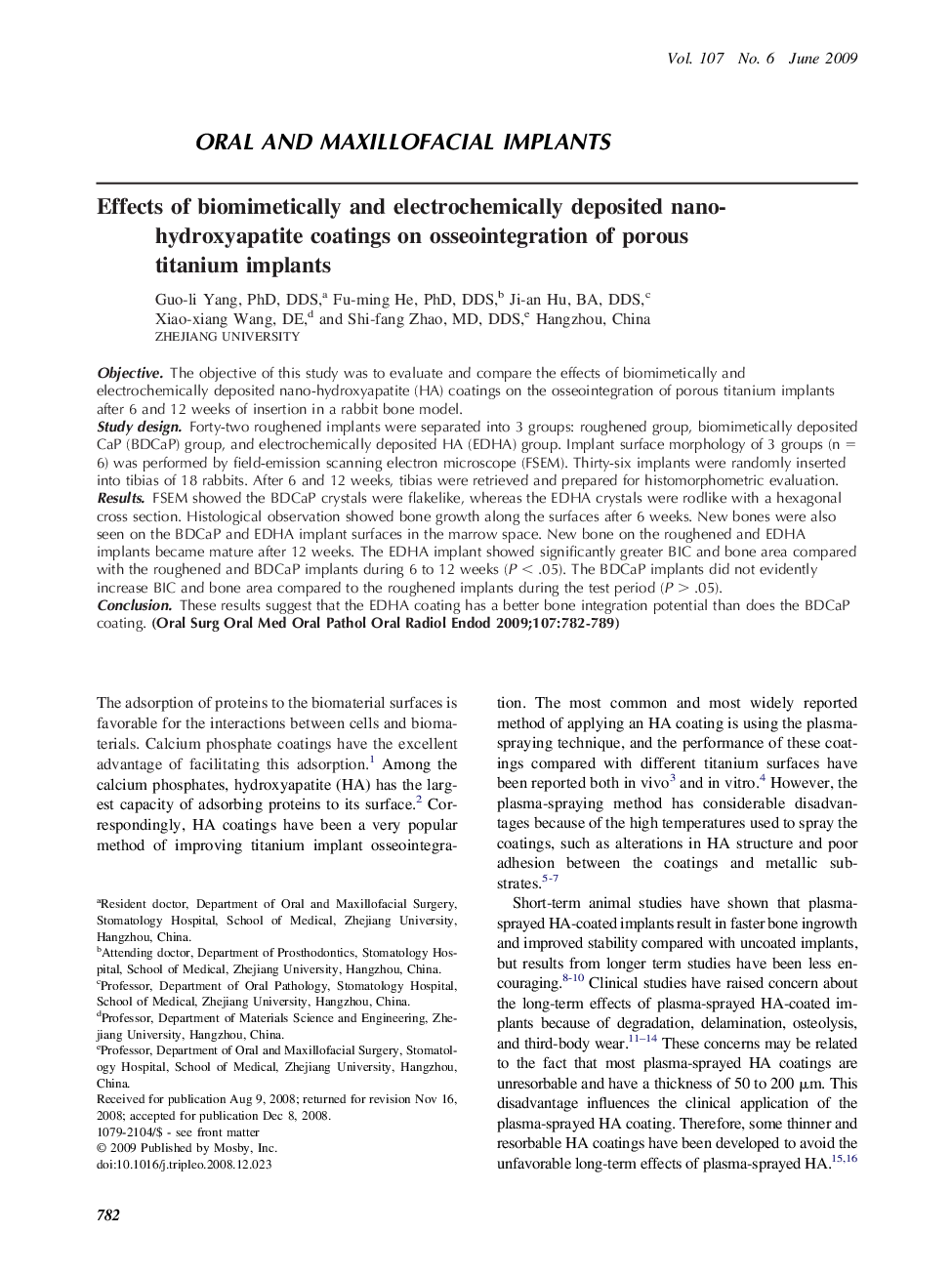| Article ID | Journal | Published Year | Pages | File Type |
|---|---|---|---|---|
| 3168022 | Oral Surgery, Oral Medicine, Oral Pathology, Oral Radiology, and Endodontology | 2009 | 8 Pages |
ObjectiveThe objective of this study was to evaluate and compare the effects of biomimetically and electrochemically deposited nano-hydroxyapatite (HA) coatings on the osseointegration of porous titanium implants after 6 and 12 weeks of insertion in a rabbit bone model.Study designForty-two roughened implants were separated into 3 groups: roughened group, biomimetically deposited CaP (BDCaP) group, and electrochemically deposited HA (EDHA) group. Implant surface morphology of 3 groups (n = 6) was performed by field-emission scanning electron microscope (FSEM). Thirty-six implants were randomly inserted into tibias of 18 rabbits. After 6 and 12 weeks, tibias were retrieved and prepared for histomorphometric evaluation.ResultsFSEM showed the BDCaP crystals were flakelike, whereas the EDHA crystals were rodlike with a hexagonal cross section. Histological observation showed bone growth along the surfaces after 6 weeks. New bones were also seen on the BDCaP and EDHA implant surfaces in the marrow space. New bone on the roughened and EDHA implants became mature after 12 weeks. The EDHA implant showed significantly greater BIC and bone area compared with the roughened and BDCaP implants during 6 to 12 weeks (P < .05). The BDCaP implants did not evidently increase BIC and bone area compared to the roughened implants during the test period (P > .05).ConclusionThese results suggest that the EDHA coating has a better bone integration potential than does the BDCaP coating.
